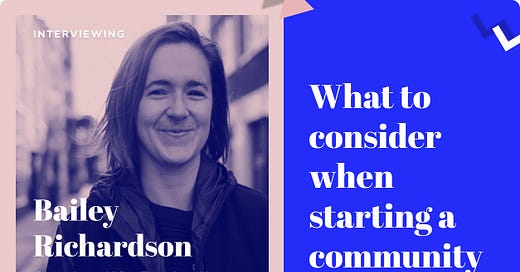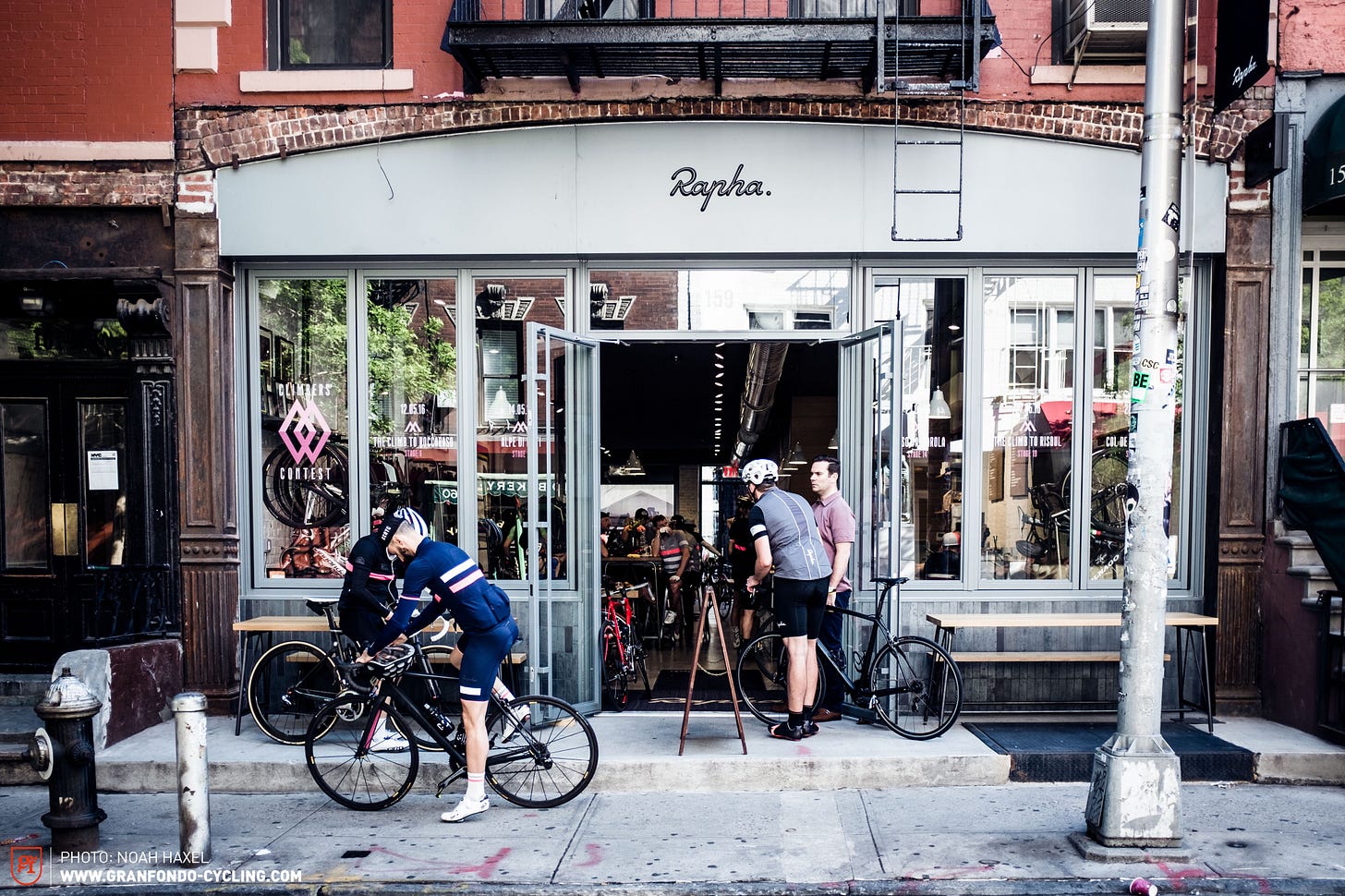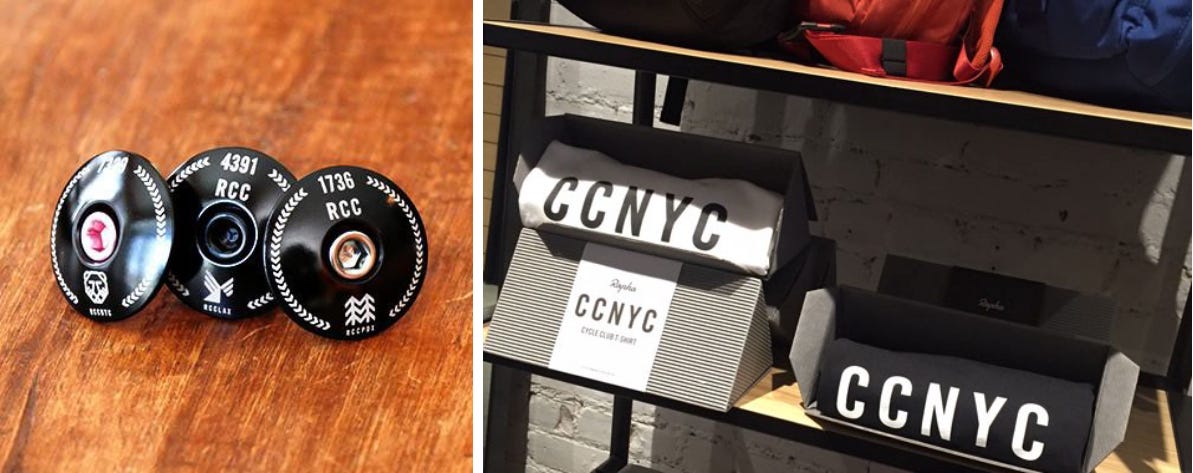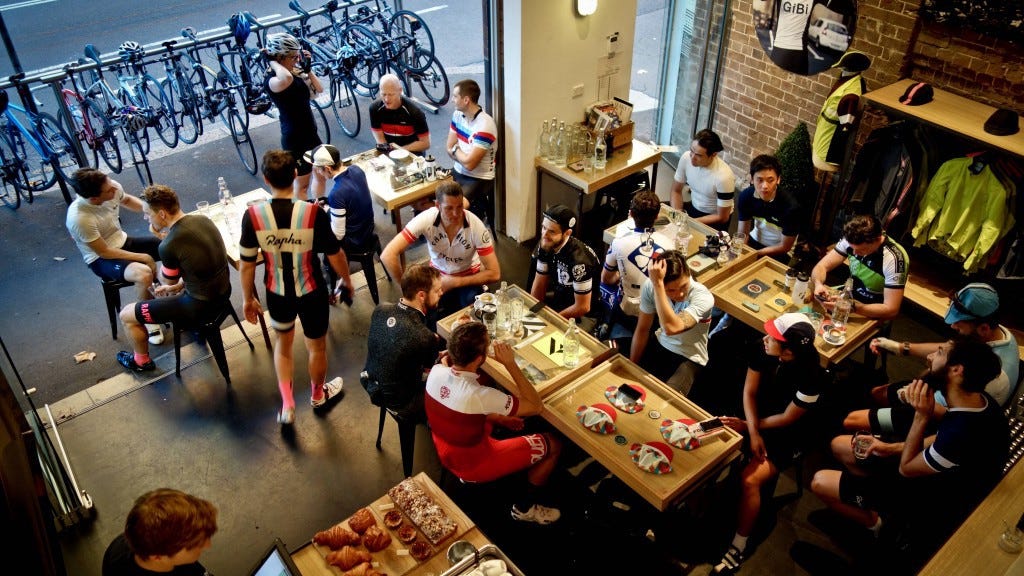
What to consider when starting a community
An interview with Bailey Richardson, Partner at People & Company and co-author of 'Get Together: How to build a community with your people'
Hey friends! 👋 We’re kicking the new year off with an amazing guest! 🍾
Steven got Bailey Richardson on a call to talk about community building. As we noticed some of you are early in the journey, we zoomed in on what to consider when starting a community.
Bailey ran community for Instagram as one of the first employees and has done a tremendous amount of work in the field of community building ever since.
You might recognize her from the Netflix documentary ‘The Social Dilemma’, or as co-author of the well-received and highly recommended book ‘Get Together: How to build a community with your people’. Currently, Bailey runs People & Company, an organization that helps individuals and organizations remove the ambiguity around community building in a digital world.
Bailey shares what to think about when you’re considering starting a community, the first things to do when you decided to go for it, common mistakes that are often made when starting out, a great example community to learn from, and a bunch more!
Enjoy, and don’t forget to hit the subscribe button (if you haven’t) to follow along on the next issues! 👇
You have a unique story on what motivated you to focus on community building. Can you explain how your background led you into this career?
My mom and brother have both been prominent figures in my life. My mom was one of the first female pilots for United Airlines, and there have been many people that responded indignantly when I told them about it. She also faced a lot of resistance from coworkers in her job. My brother just struggled in school and developed differently from others. Seeing very vividly from up close how such differences prevented them from being welcomed in different situations really shaped my perspectives.
That’s why what happened when I was working at Instagram amazed me. I started there at the beginning of 2012, and there was this culture of ‘InstaMeets’. InstaMeets were meetups where Instagram users just came together to take pictures. It had such a diverse set of people hosting them and a diverse group of people joining the meetups.
I remember one in San Francisco in 2014, seeing a guy who happened to be working for Coca Cola drive up. He had spent the night refilling soda machines, was still in his uniform, and just joined this InstaMeet with college students and tech designers. It was a mingling of so many different people. It was clear to me that every single one of them was so welcoming. Everyone was invited; everyone could participate. It was very different from how I saw my brother and mother were treated when I was younger. It seemed to me that there was a better way of being with other people. So I’m really interested in how we can create more benevolent communities like that.
Which community around a product really inspires you and you think we can learn from?
Although not a software startup, one I’ve always looked at is the Rapha Cycling Club. They started the company when the world of cycling was growing and expanding, especially in the UK in the early 2000s. They focused on the people that really cared about the clothes you would wear when cycling, the more design-forward person.
Pretty early in their growth as a company, they started a cycling club where you would pay for a yearly membership. You get a free coffee at a clubhouse and a little stem cap for your bike with your member number and your city’s logo on it. You get a jersey and a hat, and you get access to an app that’s private. In that app, there are rides that are organized by local, serious riders for anyone to join.
You could then go to your local Rapha coffee shop, get your free coffee, and then meet other people who are also Rapha enthusiasts in that area who love cycling, and you can go on a ride together.
They do every element of this exceptionally well. There’s synergy with the business goals: people pay for the club – which for them is a profitable investment itself. It also brings Rapha close to their core consumer, which is really important for brand and marketing companies in general. If you look at companies like Nike and Adidas, they’re just spending so much money researching their target audiences and trying to access them.
Rapha has put them right next to all of their employees. They have this app that has all of the people and the data they shared. They have easy access to people that are their retained customers. These customers have a high lifetime value, and they continuously get a pulse on them.
They also executed very well on the design and communication parts. The way they write, the way the CEO talks, and the way they launch things are awe-inspiring. To me, they’re the best in class. They start with this passion for biking and brought it to life for people, which has all of these downstream effects.
Many software startups we talk to consider building a community. Most realize it’s a serious investment. When should or shouldn’t they start to build a community?
I think it’s essential to look at the goals you’re trying to accomplish. You should figure out; what is it that we’re going to pay for our organization to have the capacity and resources to do? What will be hard to scale through our HQ team? And then: who do we need as partners to do it?
I’m more interested in what I would call “scaled partnerships,” where you create a little template that a lot of passionate people could grab and participate in for you because they have the energy to do it.
The old perspective here is that partnerships are these big one-off things with a big company or a celebrity. I’m more interested in what I would call “scaled partnerships,” where you create a little template that a lot of passionate people could grab and participate in for you because they have the energy to do it. For example, Rapha Cycling Clubs have done this with their ride leaders- “the people who make the Rapha Cycling Club work all over the world.” There are over 200 active ride leaders and each has received training from Rapha in group management, route planning and risk avoidance to lead rides for the RCC all around the world.
In preparing a scaled partnerships strategy like this, it’s important to be self-aware. Do you have the company culture to pull off collaborating with others at scale? I formerly worked with a startup where the founder was very detail-oriented, quite introverted, and without putting it in a negative context: quite controlling. It was what was needed for his type of business. I find that many people who have that mindset find it hard, however, to allow for collaboration and enable other people to execute parts of their vision.
Instead of giving people a perfect cake, you need to hand out the recipe and the ingredients for them to go make that cake for you.
If you want to do things through a community, you have to be ok with letting go of control. Instead of giving people a perfect cake, you need to hand out the recipe and the ingredients for them to go make that cake for you.
For people that don’t have a community yet but are interested in the idea of starting one, what would be one thing they should do first?
Get a piece of paper and try to write down your vision around who this community is for. What kind of experiences, background, or skills do they bring?
And then the second step would be identifying: why would these people want a community? What is it that they get out of it? Is it skill development? Or fun? Is it emotional support? Why would they want to connect to other human beings?
That’s more of an intellectual exercise, but it’s essential because you have to have a vision as a leader of a community. If you aren’t cognitively clear on who the group of people is and what they’re coming together for, it’s almost like you don’t have a product.
When you know who is in your community and why they’d want to connect, the planning and executing become easier, decisions like what to do together, in what format, and so on.
When you know who is in your community and why they’d want to connect, the planning and executing become easier, decisions like what to do together, in what format, and so on. These are the more design-related parts that are more creative but must be rooted against a core vision.
What common mistakes do you see happening with people that just started out a community around a business?
One of the most common mistakes I see on the business side is the inheritance from old school marketing: the fact that you should do something different every month.
People just tend to throw spaghetti on the wall with programming—events or editorial. They do a bunch of different things week to week when what they need is the equivalent of a Sunday mass for a community.
People just tend to throw spaghetti on the wall with programming—events or editorial. They do a bunch of different things week to week when what they need is the equivalent of a Sunday mass for a community. You need your consistent activity so that when someone is in the community, they know how to plug in. They can join a thread somewhere every Friday morning or show up at a particular day and time and not feel out of place.
Remember: The goal is not flashy marketing. It’s about getting the people who care closer to you and closer to each other. It’s about that kind of gradual growth and incremental momentum-building.
We have an acronym to guide people in their thinking on this called PPR at People & Company. PPR stands for Purposeful, Participatory, and Repeatable. And when we look at the community activities that happen online or offline that someone is hosting, the question we ask is: can you add more PPR to this? Is it participatory? Are you repeating it? Does it relate to who is in your community and why they’re in it?
At Instagram, for example, we saw our community strategy as an investment in inspiration and education. We wanted to feature users and feature content that gave new people ideas around what to share on the platform. Why? We knew if the content were good, the experience would be good and people would find value in the product. So our job was to supercharge that with various ongoing programs.
One that we used to run was the Weekend Hashtag Projects, which we adopted from Tumblr.
We would take a hashtag we saw someone using in the community—something someone came up with that spread a bit organically—we would then put it out to the broader community through our editorial channels and share a certain challenge for the weekend, encouraging people to create their own photo with this theme and hashtag. Our team would then review and engage with hundreds of thousands of submissions over the weekend, and every Monday we would feature 12 of our favorite pictures for millions of our readers to see.
That was a thing we did every Friday and every Monday for 5+ years. People knew it was going to happen. There was this central drumbeat for people to show up and participate.
What do you expect to see in the coming years when we’re talking about communities around businesses?
The thing that’s on my mind and is not that different from what I seem to see many people talking about: compensation. We see this with Substack and Patreon and how even something like Twitch is experimenting with tips and earning opportunities for creators.
So far, a relatively small amount of individuals with big audiences have been able to make a living off of building online communities around their work. But there’s a vast amount of people who are really good at something and have a very loyal audience around them that might never even make it into mass culture or thread into a seamless business model.
I think many people are trying to build tools so that people below an ‘elite tier’ can fund the work they currently do as active service for a community of people, and I’m excited about that.
For too long, the reward structure has looked like a pyramid, where only a few people get all of the money and can survive doing this.
For too long, the reward structure has looked like a pyramid, where only a few people get all of the money and can survive doing this.
Community is quite the rage these days. What makes you most excited in terms of new tooling or things coming up?
I’m mostly excited by platforms where people are getting paid directly. I’ve been working with the Substack team a bit, and I think they’re kind of at the front of that. Twitch is also moving interestingly around this. I am also interested in how companies are giving their users ownership in their platforms through blockchain.
I also think we’re on the edge of continual disruption in social media and methods for communities to connect, communicate, share resources. I’ve had many people reach out to me last year about building alternative spaces. People have known for a long time that I worked at Instagram, and I’ve been doing other things for a while now, but I’ve heard from many more builders of new spaces this last year than years prior. It seems to me there’s more energy for creating new social spaces than a few years ago. There’s still a lot of room for playfulness and innovation. TikTok is an excellent example of it. As the world changes, our tools should change as well.
Amidst all that change, what are your plans personally and for People & Company in the coming years?
I care about two things: learning and helping. When it comes to learning, I never want to think I’m an expert. There’s always so much to learn about the tools out there and what is motivating people to connect. I always want to go close to practitioners of community building who I think are interesting. We use our podcast to do that. I’m just trying to be a good writer, learner, synthesizer, and I hope that I get to keep doing that for a long time.
As more and more people know that community-building is essential, I think they also lack a clear sense of what is and isn’t a community and well as how to go about building one.
The other side is helping people. As more and more people know that community-building is essential, I think they also lack a clear sense of what is and isn’t a community and well as how to go about building one.
I find it rewarding to help people access that clarity. That’s what we’ve been working on for a while now with People & Company. We’ve developed a lot of tools, exercises, and resources along the way that allows groups of people to find that clarity.
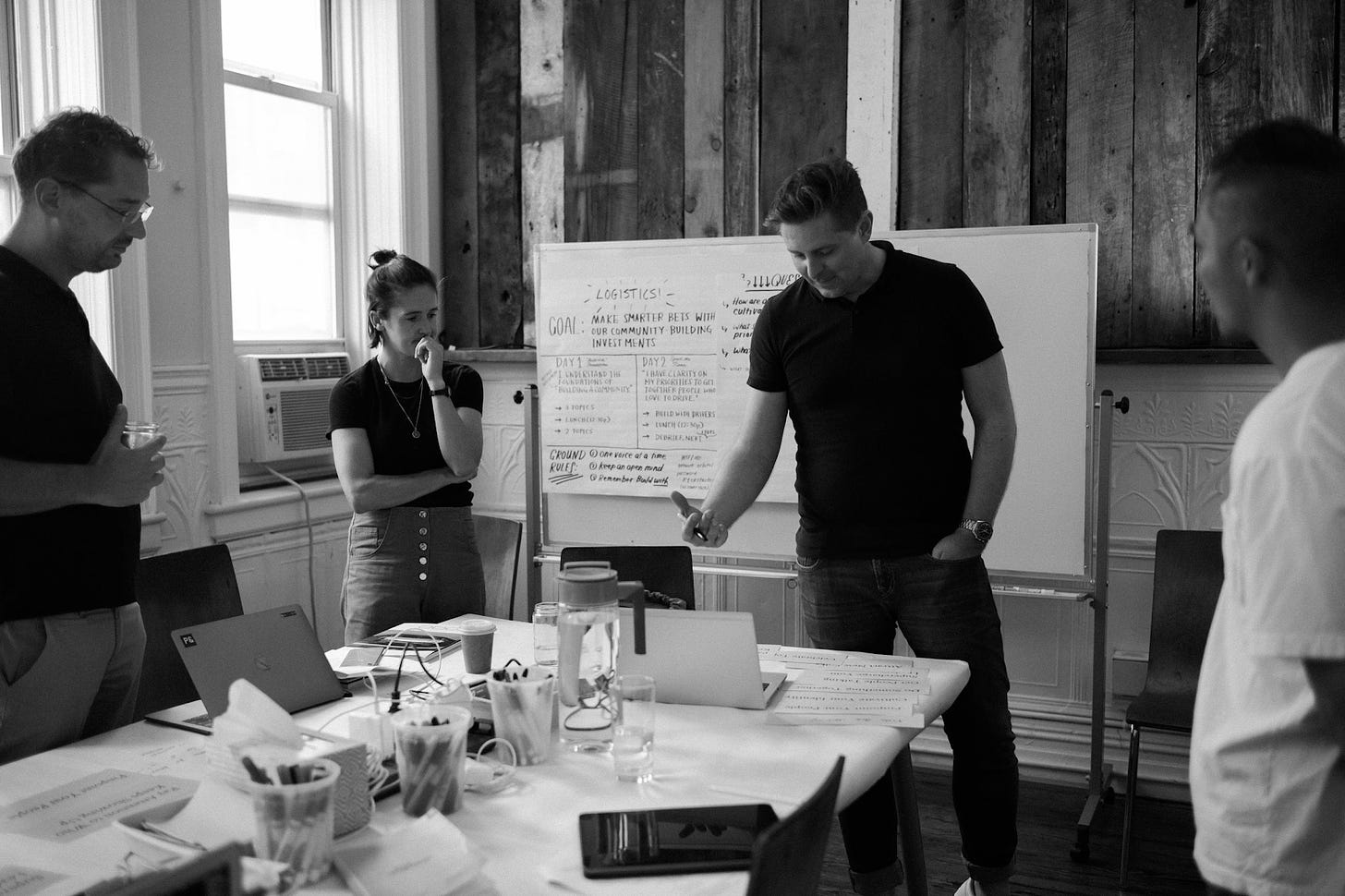
But this is something we must all keep pushing further and further. Currently, there are a lot of people speaking in different directions about how to build communities. We’re all trying to pin down its meaning and the process that goes into building a community because it’s changing for human beings in a huge seismic way. If you had asked someone what ‘community’ means 20 years ago, they would say that community is their town or their church community. It’s completely different from today and the way you and I think about it.
So this moment of divergence makes intellectual sense. But it feels a little worry-some to me that the conversation is so big without having a solid foundation. There’s a lack of power when we’re not specific, and so I hope we can come together to establish a root definition and methodology from which to ground the conversation. Hopefully, P&C can play a helpful, grounding role in that process.
Something else you want to share or plug from your side?
The way we learn and teach people is really through writing. In the coming year, we’re planning to do less aggregate writing and podcasting, but apply more rigor to what we do publish. If anyone is looking to learn about the space: that’s on our Substack and podcast.
This year we’re also putting a lot into coaching people; building relationships with people we want to help with this and think are interesting to work with. We’re helping individuals ranging from founders to VPs of Community. We also do this for teams, so later-stage startups exploring a community investment, for example. For us, it’s all about finding people we enjoy helping, so if anyone feels that’s for them, we’d love to hear from them.
Thanks for reading this issue 🙏
Next week we plan to have another cool newsletter for you 💪, stay tuned, and subscribe if you didn’t yet.
✌️ Cheers,

